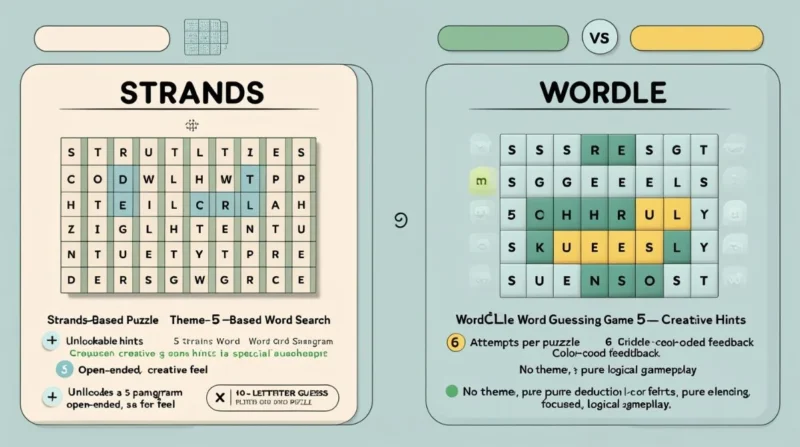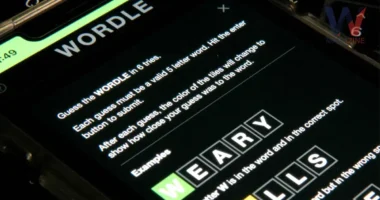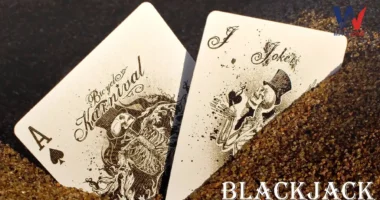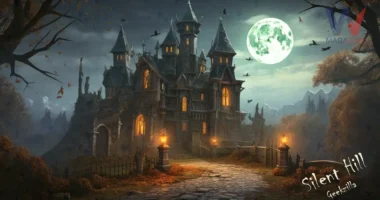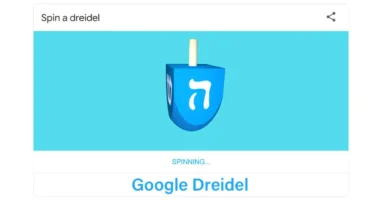Table of Contents
If you’re a fan of word games, you’ve likely encountered both Strands and Wordle, two popular puzzles from The New York Times. While they share the common goal of challenging your vocabulary and problem-solving skills, the way they provide hints and structure gameplay differs significantly. Let’s explore these differences to help you better understand and enjoy each game.
Understanding the Basics
What is Wordle?
Wordle is a daily word puzzle where players have six attempts to guess a five-letter word. After each guess, the game provides feedback:
- Green: Correct letter in the correct position.
- Yellow: Correct letter in the wrong position.
- Gray: Letter not in the word at all.
This color-coded system helps players refine their guesses with each attempt.
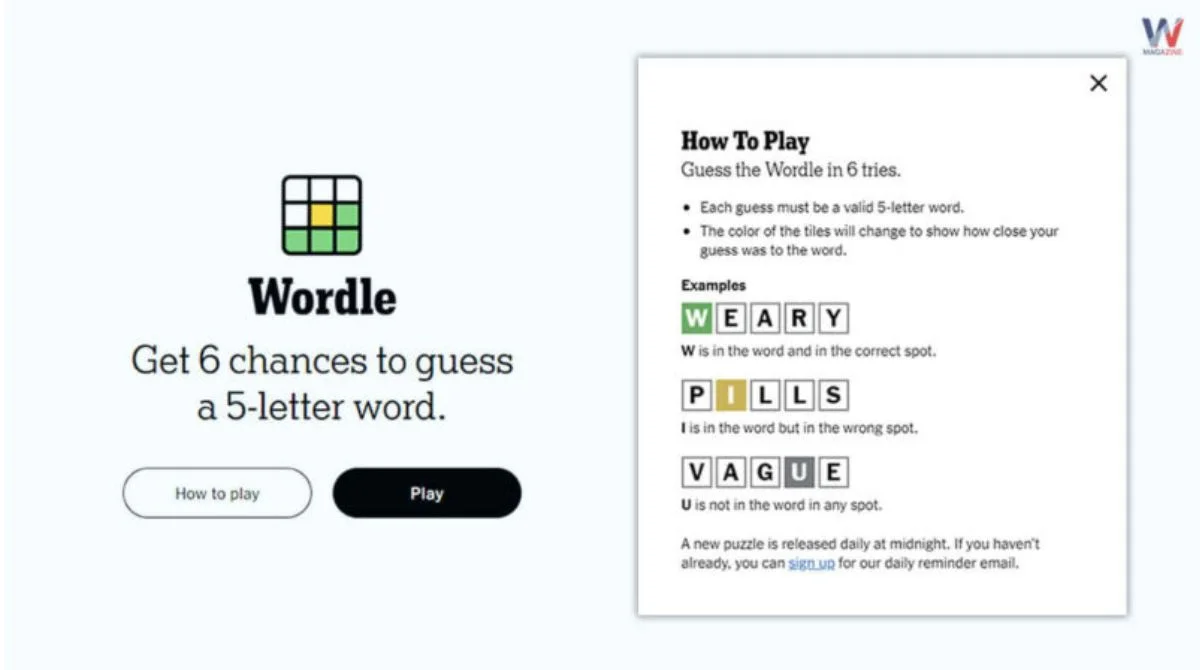
What is Strands?
Strands is a newer addition to The New York Times’ suite of word games. It presents players with a grid of letters and a theme. The objective is to find all the words related to the theme, including a special word called the “Spangram” that spans the grid and encapsulates the theme.
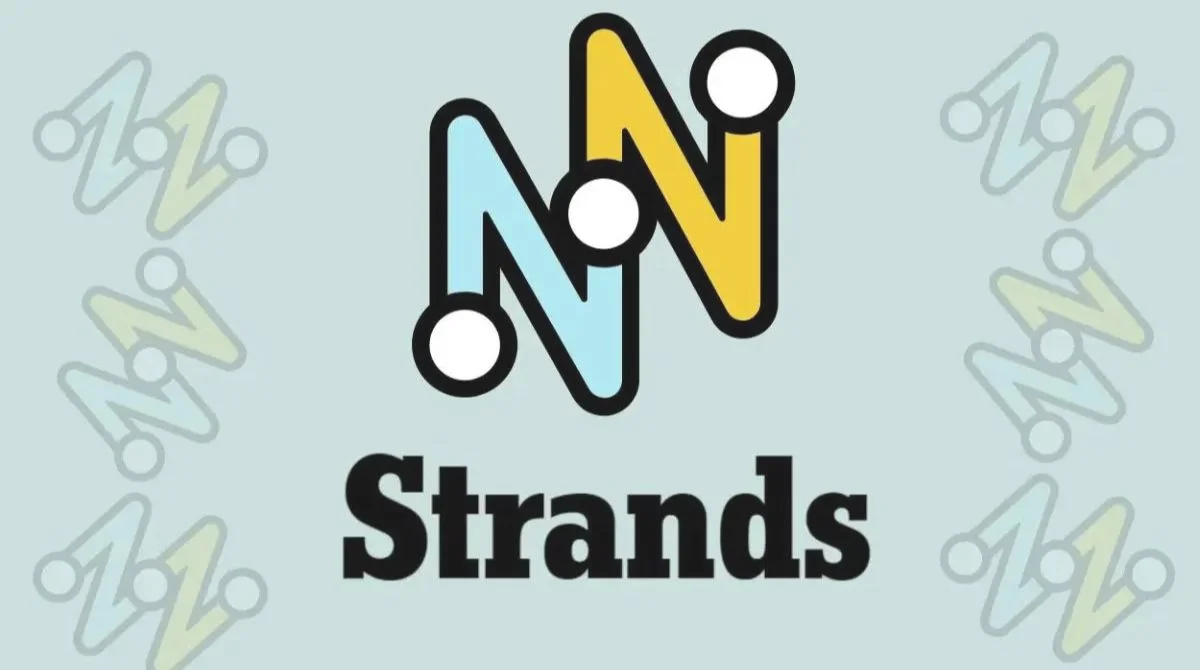
Comparing Hints in Strands and Wordle
Wordle Hints
In Wordle, hints are intrinsic to the game’s feedback mechanism. Each guess provides immediate visual cues through color changes, guiding players toward the correct word. The challenge lies in interpreting these cues to narrow down possibilities.
Strands Hints
Strands offers a different approach. Players are given a theme at the start, which serves as a broad hint for the words to find. If players identify three words not related to the theme, they unlock the option to receive a direct hint, highlighting a word in the grid. This system encourages exploration and deduction based on thematic connections.
Gameplay Mechanics
Wordle Mechanics
- Daily Puzzle: One puzzle per day.
- Guess Limit: Six attempts.
- Feedback: Immediate, color-coded.
- Objective: Guess the correct five-letter word.
Strands Mechanics
- Daily Puzzle: One puzzle per day.
- Grid-Based: Letters arranged in a grid.
- Theme-Based: Words relate to a given theme.
- Hints: Theme provided; additional hints unlocked through gameplay.
- Objective: Find all theme-related words, including the Spangram.
Strategic Approaches
Strategies for Wordle
- Start Strong: Use words with common vowels and consonants.
- Analyze Feedback: Pay close attention to color cues.
- Eliminate Options: Use the process of elimination to narrow down possibilities.
Strategies for Strands
- Understand the Theme: Let the theme guide your word search.
- Look for Patterns: Identify common prefixes, suffixes, or word groupings.
- Use Hints Wisely: Unlock hints by finding non-theme words to assist in challenging puzzles.
Common Mistakes to Avoid in Both Games
- Overthinking simple words: Sometimes the answer is easier than you expect. Don’t skip obvious words because they seem “too easy.”
- Ignoring what the hints tell you: In Wordle, if a letter is gray, it’s not in the word. In Strands, if the theme is clear, stay on track. Don’t go off-theme.
- Repeating failed strategies: If a certain guessing style isn’t helping, change your approach. Try different letter positions, new word lengths, or scan the grid in a new direction.
Sharpen Your Puzzle-Solving Mindset
To really become a pro at decoding hints in Wordle and Strands, you need more than just strategy, you need the right mindset. Be patient, observant, and curious. Think like the puzzle creator. What kind of wordplay or connections might they expect you to find?
Practicing regularly also trains your brain to spot patterns faster and recognize common words. Over time, you’ll build a mental dictionary that kicks in the moment you see a theme or letter.
User Experience and Engagement
Wordle Experience
Wordle’s simplicity and quick gameplay make it an easy daily habit. The immediate feedback and limited attempts create a sense of urgency and satisfaction upon solving.
Strands Experience
Strands offers a more exploratory experience. The thematic element adds depth, and the grid-based search requires a different kind of attention and strategy. The option to unlock hints adds an extra layer of engagement.
Why Strands Hints Feel More Addictive Than Wordle Hints?
Strands hints tap into thematic thinking and discovery, which triggers curiosity and pattern recognition. The satisfaction of uncovering hidden words based on a theme creates a “reward loop” that keeps players engaged.
In contrast, Wordle hints are more logical and structured, relying on deduction and trial-and-error. While satisfying, it’s more about solving a code than exploring connections.
Key Difference:
- Strands: Feels like solving a mystery, it’s open-ended and creative.
- Wordle: Feels like cracking a code, it’s focused and analytical.
Both are fun, but Strands hints often feel more addictive because they keep your brain exploring.
When to Use Which Game?
If you’re short on time and love a fast challenge, go with Wordle. It’s quick, direct, and satisfying. If you’re in the mood for something deeper with a creative twist, try Strands. It’s ideal for players who enjoy exploring themes and making connections. Either way, both games are more fun when you know how to use the hints like a pro.
